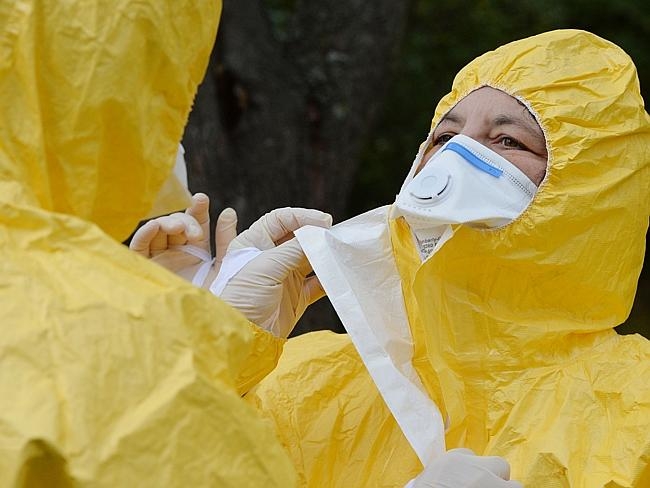
INFECTIOUS disease experts are questioning the adequacy of protection equipment being used by health workers treating Ebola victims as more health workers succumb to infection.
The World Health Organisation says so far more than 416 health care workers have been infected with Ebola and more than 233 have died.
Even nurses in Spain and the United States following strict infection control procedures have caught the deadly virus.
University of NSW infectious diseases expert Professor of Infectious Diseases Epidemiology Raina MacIntyre says this raises serious questions about the adequacy of infection control procedures.
“In West Africa, health workers are dying faster than their patients, illustrating the tragic price they pay for doing their jobs,” she said.
She’s arguing at the very least P2/N95 respirator masks should be used in the suite of protective gear to help prevent infection instead of surgical masks.
In Australia our national guidelines recommend a fluid repellent surgical mask for routine care, a P2/N95 respirator mask is only recommended in more high risk procedures such as aerosol generating procedures.
The largest nurses professional association in the United States the National Nurses United is demanding nurses be issued with hazmat suits.
“The CDC doesn’t say that we need hazmat suits. If this doesn’t change dramatically, we will picket every hospital in this country if we have to.” Executive director of the union RoseAnn DeMoro said this week.
Public health experts and governments are insisting Ebola is hard to transmit and can only be transmitted by contact with the bodily fluids of an infected person.
Professor MacIntyre says there is, however, uncertainty about how you catch Ebola with studies showing pigs, primates and some humans have caught the disease without direct contact.
“There is plenty of uncertainty about transmission,”

The president of Australia’s College for Infection and Prevention Control Belinda Henderson and the Australian Nursing and Midwifery Federation have rejected the need for Hazmat suits to treat Ebola victims.
They claim the all in one suits could help the disease spread because they are difficult to remove.
“Hazmat suits are like a big plastic overall with a breathing unit built in, they are quite sweaty and bulky,” says president of the Australasian College for Infection Prevention and Control Belinda Henderson.
Unlike the US, health care workers in Australia have a buddy to watch them to remove protective equipment to catch any possible infection route.
They have to turn their gloves and gowns inside out to contain any infection on the equipment when they disrobe, Ms Henderson said.
Health care workers in West Africa are using even more intense infection control measures including plastic shoes and chlorine wash downs of their robes and overalls before they are removed but they are still getting infected.
World Health Organisation assistant director general Dr Bruce Aylward said the number of cases of Ebola would reach 9,000 this week and the death rate had climbed from 50 to 70 per cent.
In the last for weeks there have been around 1,000 new cases a week and so far around 4,447 people have died from Ebola.
By the end of the year there could be between 5,000 and 10,000 new cases a week, the WHO is predicting.
Source: News.com.au
